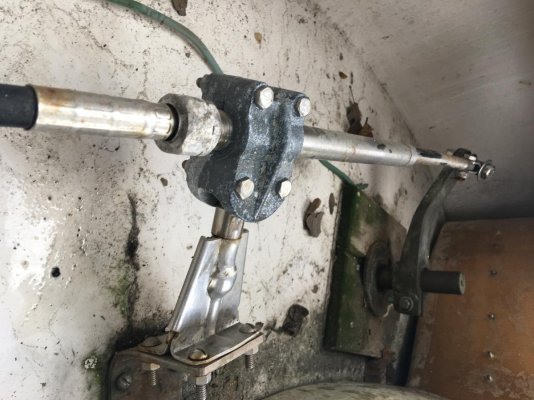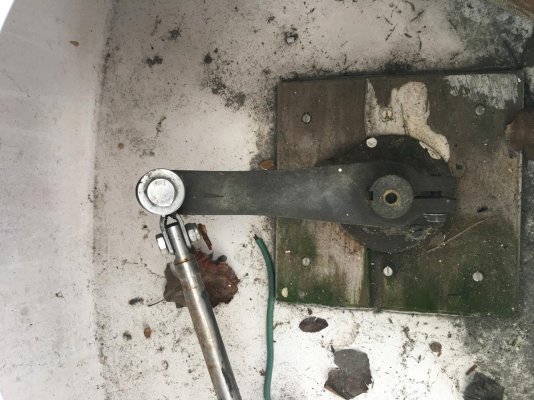Jn711
Member
Hello all, just beginning this project. Replacing the original Big-T Teleflex cable steering with hydraulic steering. This will be something I’ll be installing and I’m interested in understanding other owner’s experiences with these installations. Boat is a Willard Vega Searcher, 30’. I am planning on installing a seastar solutions system. If anyone has any information on the following questions I’d very much appreciate your input:
1 - The current steering system is 3 turns L-L, and is generally light. Has increased turns or steering effort been a problem for others that have made this conversion? Any recommendations on how best to handle these potential impacts?
2 - Placement of the hydraulic ram. The tiller arm is not flat, it is curved upwards moving aft. How have others mounted the ram to best operate in the same plane as the rudder arm?
3 - Critical lessons learned from other’s experiences?
I am working with Seastar tech support for system component recommendations. Provided them with a detailed worksheet and dimensioned sketch so they could calculate rudder torque.
Thanks as always for any input...
Jim
1 - The current steering system is 3 turns L-L, and is generally light. Has increased turns or steering effort been a problem for others that have made this conversion? Any recommendations on how best to handle these potential impacts?
2 - Placement of the hydraulic ram. The tiller arm is not flat, it is curved upwards moving aft. How have others mounted the ram to best operate in the same plane as the rudder arm?
3 - Critical lessons learned from other’s experiences?
I am working with Seastar tech support for system component recommendations. Provided them with a detailed worksheet and dimensioned sketch so they could calculate rudder torque.
Thanks as always for any input...
Jim



